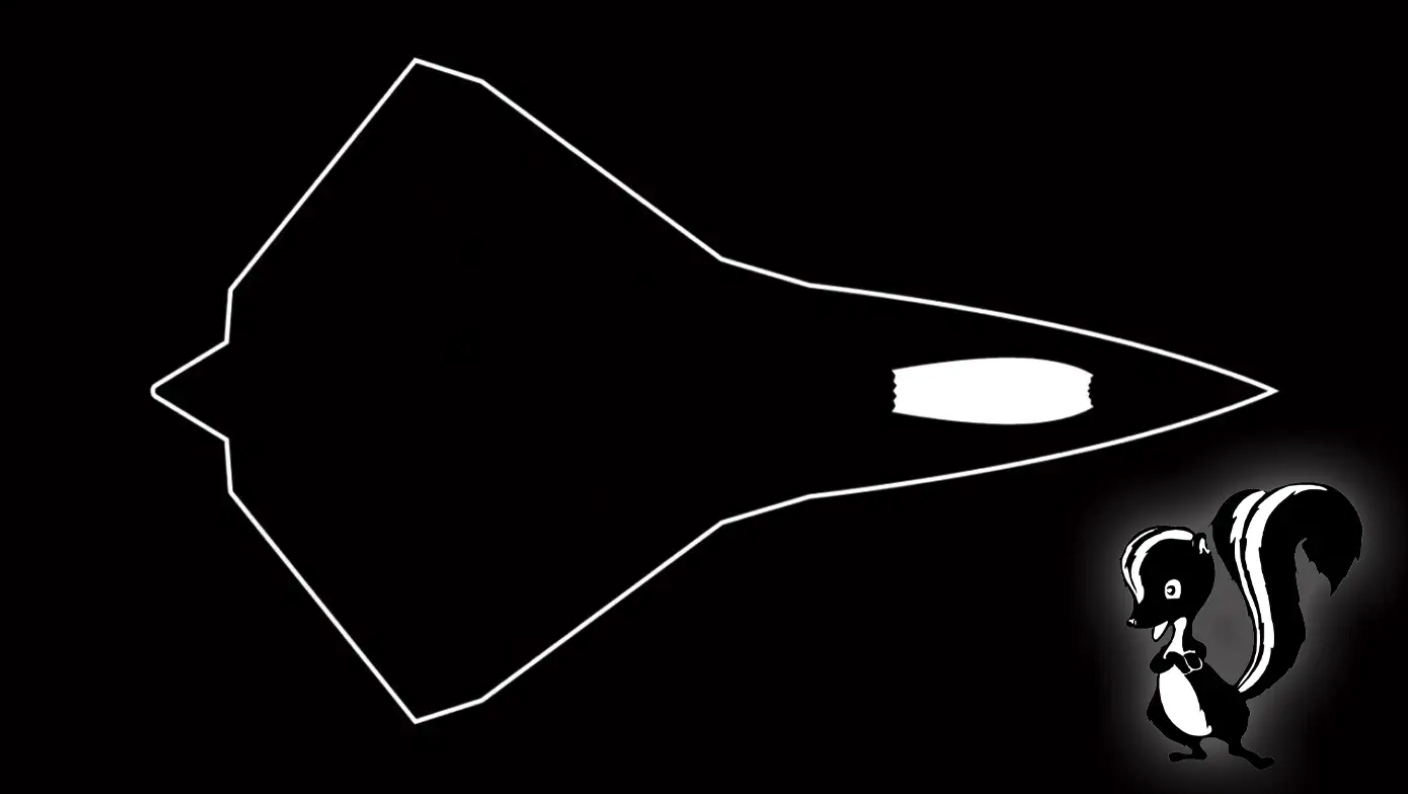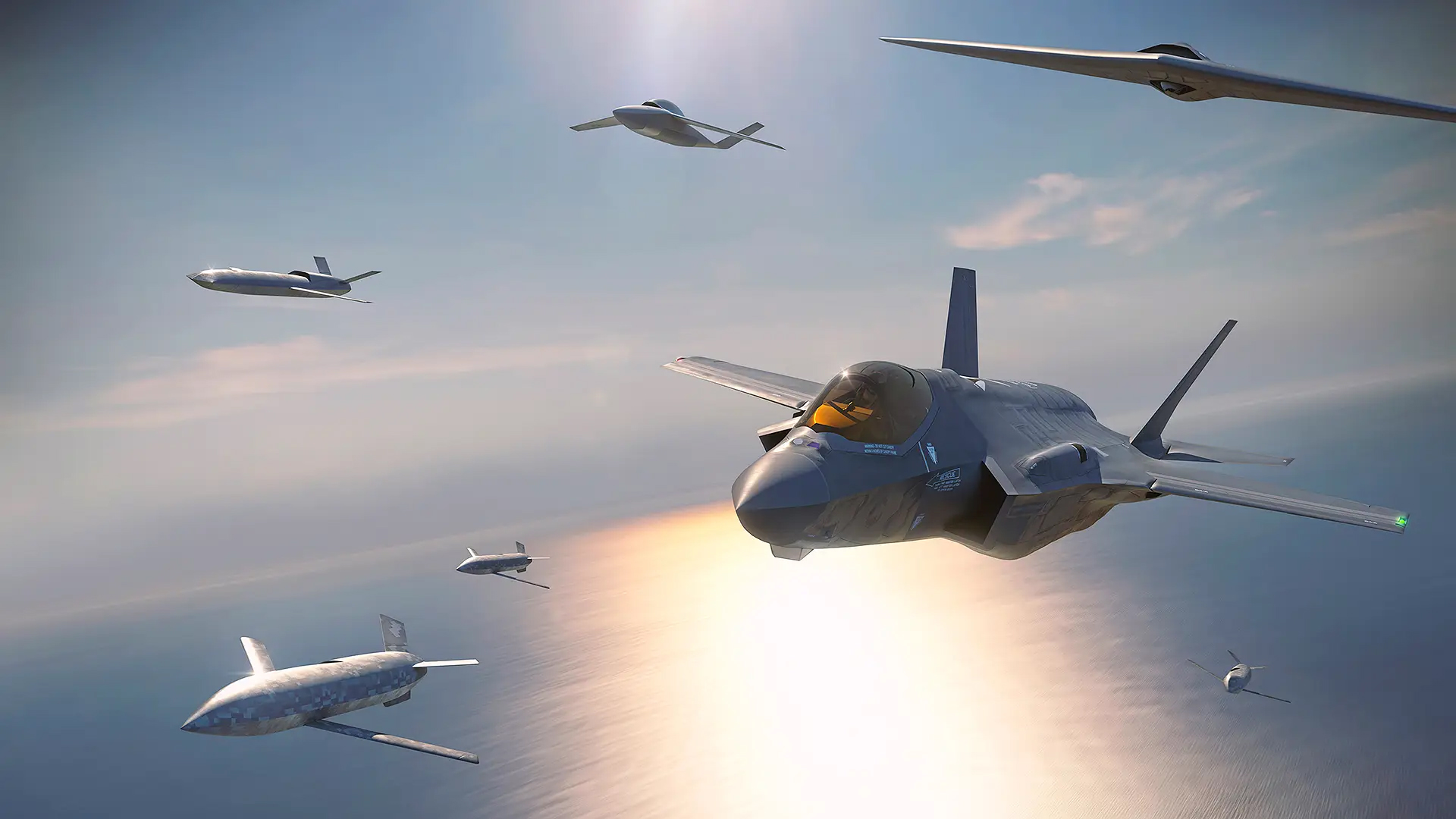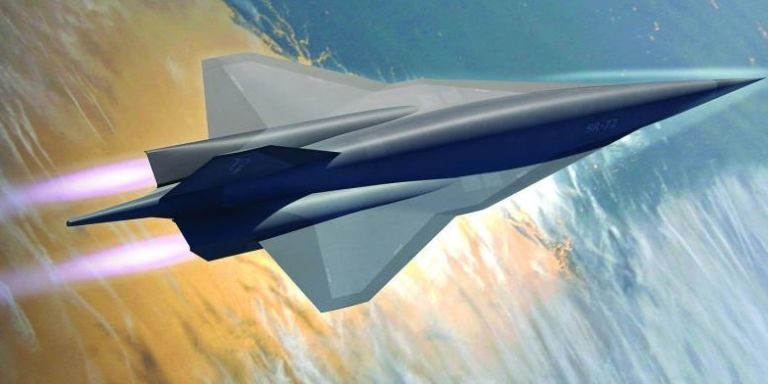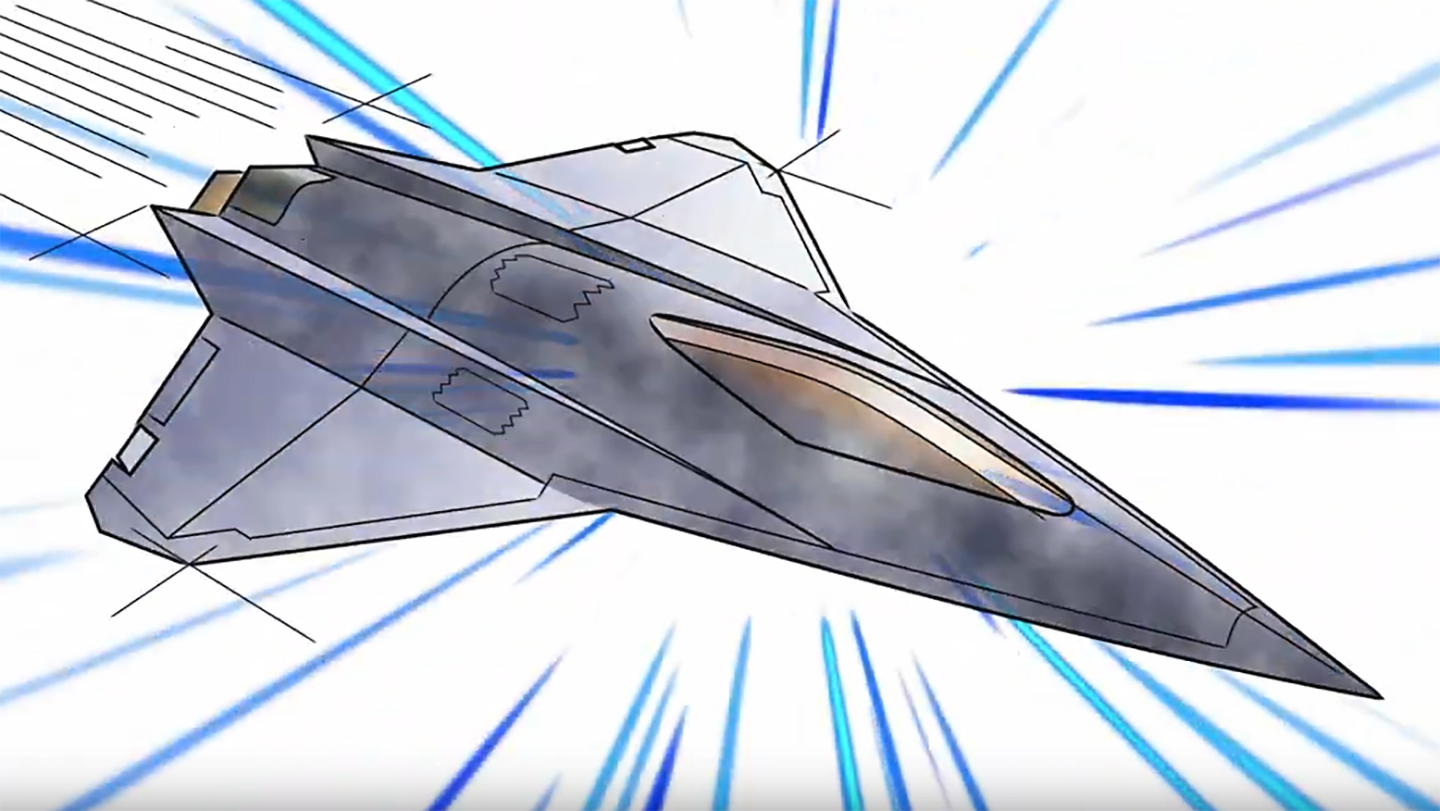Lockheed Martin’s Skunk Works is celebrating its 80th anniversary. A marketing push around this milestone has been underway and today we got a new ad for it that includes a look at an intriguing tailless manned tactical jet concept. It’s in line with what we have seen from the bleeding edge design firm in the recent past surrounding the Next Generation Air Dominance (NGAD) initiative.

While it would be wrong to think Lockheed is dropping its highly classified design for a critical aircraft procurement initiative in an online promotional video, it is certainly indicative of what the company sees as a solution to Next Generation Air Dominance challenges, at least in broad strokes.
The design has a very similar wing shape and overall planform as what we have seen in cryptic NGAD-related posts from Skunk Works in the past. In fact, the design in the ad shares many cues from the line drawing the company dropped without explanation back in July.

The ‘stinger’ tail is also of interest as it points to a single engine design with a 2D exhaust, similar to what is seen on the F-22, although with a lower lip extension. This would make sense design-wise as it is a common attribute of low-observable aircraft as it reduces/masks the infrared signature of the aircraft from most perspectives sensors would be looking at it, and it can provide a surface to spread and actively cool the exhaust after it exits the nozzle. Whether this aircraft concept, or NGAD in general, will have thrust vectoring remains unclear, but there is a possibility it will, although extreme maneuverability really wouldn’t be the primary driver for the inclusion of such a system. You can read more about the intriguing questions surrounding the manned NGAD aircraft’s performance goals in this previous piece.

The large faceted bulges on each side of the inner fuselage are an interesting addition, although we really don’t know what to make of them beyond they could be just a stylistic choice for the artist and also a way to modify the rendering enough for it to not represent the actual design. On the other hand, those features could provide greater internal volume without drastically impacting the aircraft’s performance or low-observable characteristics. We just don’t know.
The most intriguing part of the rendering is the huge canopy. This is new compared to the other art we have seen from Lockheed in that it would look to accommodate two crew instead of one. While NGAD overall is highly focused on automation with the infusion of artificial intelligence (AI) in the manned aircraft and its drone wingmen being key features, one pilot can only do so much. These aircraft are going to be as much forward battle management nodes and flying ‘quarterbacks’ of the fight as traditional fighters, so having another crewman to help manage that would be an interesting and potentially very relevant requirement. Doing so comes at a cost though, both in terms of reduction in fuel and payload, both of which are thought to be absolutely critical drivers for NGAD.
It also means that if NGAD is shot down where it is intended to operate, deep into contested territory, two crew will be at risk — and in need of rescue — not one. Finally, it means more highly trained personnel, something the Air Force has struggled with retaining for years, will be needed to man NGAD, although the shift to Collaborative Combat Aircraft (CCA) drones to augment manned types will drastically offset this.
It’s also worth noting that NGAD’s canopy will likely look stretched even for a single pilot configuration compared to the traditional bubble types we are accustomed to on fighters today. This will be done to make the design as low observable (stealthy) and streamlined as possible.
Once again, it’s fun to examine this concept are for what it has to offer, but that doesn’t mean it accurately depicts Lockheed’s NGAD entrant or any one of the many design iterations that flowed into that finalized product.
Another interesting part of the video shows a faceted flying wing unmanned combat air vehicle (UCAV)-like design. NGAD’s CCA drones have leaned more toward higher-performance, fighter-like designs, but Lockheed has made a very well-thought-out case that a family of drones, with disparate capabilities, will be needed to win over the future battlefield. These include more transitional flying-wing UCAVs, smaller attritable designs, and more fighter-like CCAs. The concept shown in the ad looks to be somewhere between a flying wing, high-endurance UCAV, and a more fighter-like tailless type. Regardless, it is clearly representative of the design house’s focus on next-generation unmanned systems above all else.


Finally, we got another look at the so-called ‘SR-72’ concept that Lockheed has been touting for nearly a decade — one that could be coming to fruition in the dark world of clandestine aircraft development. Made even more famous by the Skunk Works-designed fictional Darkstar in Top Gun: Maverick, the hypersonic reconnaissance and strike aircraft concept is maybe the most hotly anticipated of programs the Skunk Works could be deep in development on.
The stylized art shows the single-tailed concept of the notional SR-72, which is something we have seen for years now, so it is not really new, but it does remind us that it’s still top of mind for the Skunk Works. It also pairs with many indications this program is progressing.


Of course, these are just some little stylized tidbits of potential programs the Skunk Works is involved with. Many others exist deep in the classified realm and throngs of other initiatives the company has worked on for 80 years remain classified.
The Skunk Works story is an incredible one that has impacted so many facets of society beyond its direct advances in aerospace, from influencing macro business practices to general science to pop culture. Kelly Johnson’s creation remains a crown jewel in America’s military-industrial complex 80 years after it came into being and these concepts are just a reminder of ways the Skunk Works is looking toward the future, with the three examples shown here likely being far closer on the horizon to being realized than some of the other stuff they are doing behind closed doors.
Contact the author: Tyler@thedrive.com
